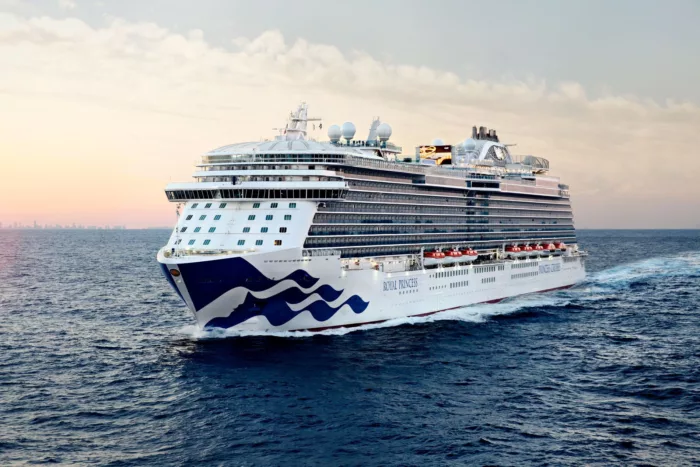
Princess Cruises
Credited with introducing millions of Americans to the concept of a modern cruise holiday, Princess Cruises is still innovating to this day.
Sporting a fleet of 17 ships with capacities ranging from 2,000 to 4,300 passengers, the line is best known for its Alaskan cruises, but travels to destinations the world over.
With an emphasis on destination leadership and local expertise, Princess is an excellent choice for the discerning traveller seeking to sail in comfort.
3080
Passengers
1200
Crew
2007
Launched
2019
Last refit
113561t
Tonnage
289.9m
Length
48.5m
Width
22kts
Speed
19
Decks
USD
Currency
Cruise Itinerary
Day 1
Southampton, England
Days 2 - 3
At Sea
Relax and make the most of the myriad of facilities available on board the ship, from fantastic entertainment to delicious and diverse dining options.
Day 4
Trondheim, Norway
Day 5
At Sea
Relax and make the most of the myriad of facilities available on board the ship, from fantastic entertainment to delicious and diverse dining options.
Day 6
Tromsø, Norway
Days 7 - 8
Alta, Norway
Wheelchair Access Limited
Day 9
At Sea
Relax and make the most of the myriad of facilities available on board the ship, from fantastic entertainment to delicious and diverse dining options.
Day 10
Gravdal, Norway
Wheelchair Access Limited
Day 11
At Sea
Relax and make the most of the myriad of facilities available on board the ship, from fantastic entertainment to delicious and diverse dining options.
Day 12
Ålesund, Norway
Days 13 - 14
At Sea
Relax and make the most of the myriad of facilities available on board the ship, from fantastic entertainment to delicious and diverse dining options.
Day 15
Southampton, England
Day 16
Le Havre, France
Day 17
At Sea
Relax and make the most of the myriad of facilities available on board the ship, from fantastic entertainment to delicious and diverse dining options.
Day 18
Bilbao, Spain
Day 19
At Sea
Relax and make the most of the myriad of facilities available on board the ship, from fantastic entertainment to delicious and diverse dining options.
Day 20
Vigo, Spain
Day 21
At Sea
Relax and make the most of the myriad of facilities available on board the ship, from fantastic entertainment to delicious and diverse dining options.
Day 22
Funchal, Madeira, Portugal
Days 23 - 29
At Sea
Relax and make the most of the myriad of facilities available on board the ship, from fantastic entertainment to delicious and diverse dining options.
Day 30
Fort Lauderdale, Florida, United States

Day 1
Southampton, England

Days 2 - 3
At Sea

Day 4
Trondheim, Norway

Day 5
At Sea

Day 6
Tromsø, Norway

Days 7 - 8
Alta, Norway

Day 9
At Sea

Day 10
Gravdal, Norway

Day 11
At Sea

Day 12
Ålesund, Norway

Days 13 - 14
At Sea

Day 15
Southampton, England

Day 16
Le Havre, France

Day 17
At Sea

Day 18
Bilbao, Spain

Day 19
At Sea

Day 20
Vigo, Spain

Day 21
At Sea

Day 22
Funchal, Madeira, Portugal

Days 23 - 29
At Sea

Day 30
Fort Lauderdale, Florida, United States
Ship Details


Princess Cruises
Emerald Princess
Grand in design, this magnificent vessel offers a host of delightful diversions as you see the world
Your culinary journey at sea reaches new heights with an abundance of fresh restaurant choices and dining options aboard Emerald Princess.
Cabins
All Prices





















